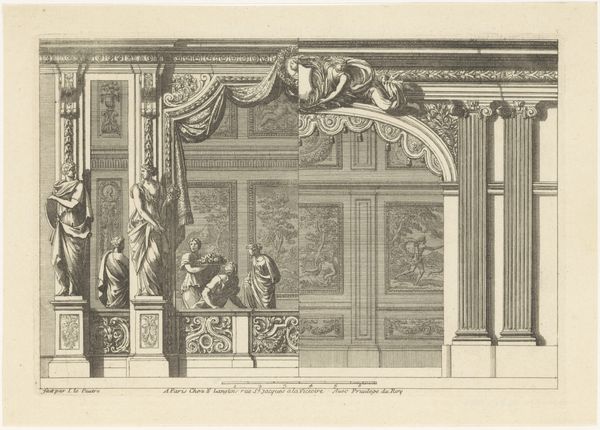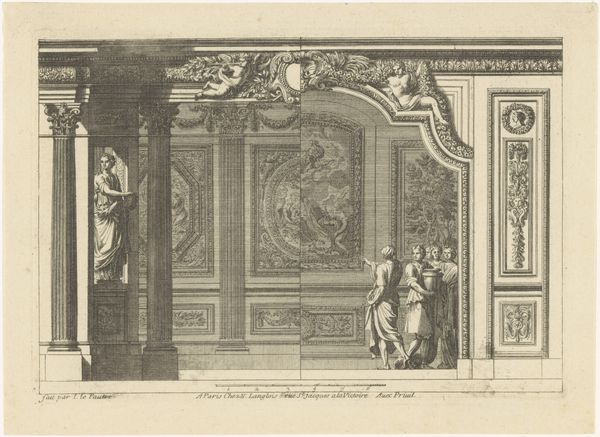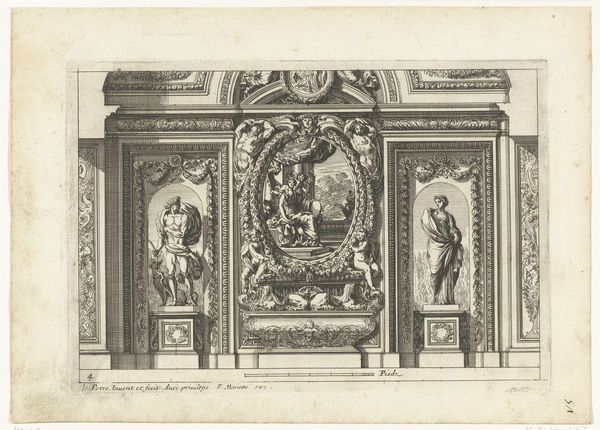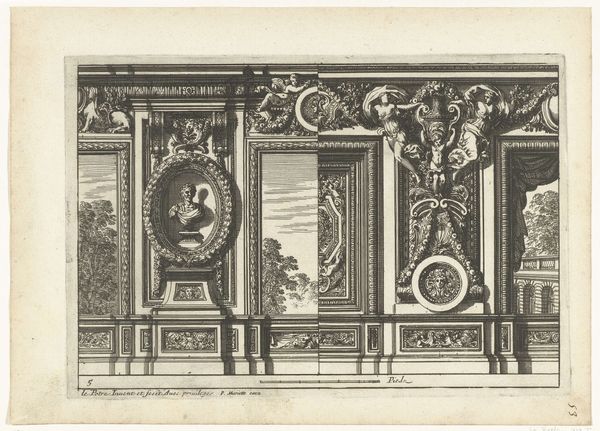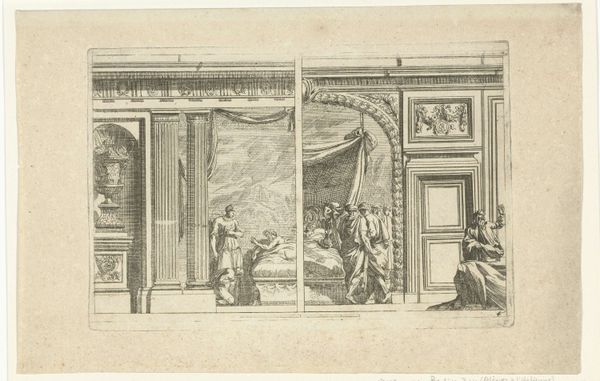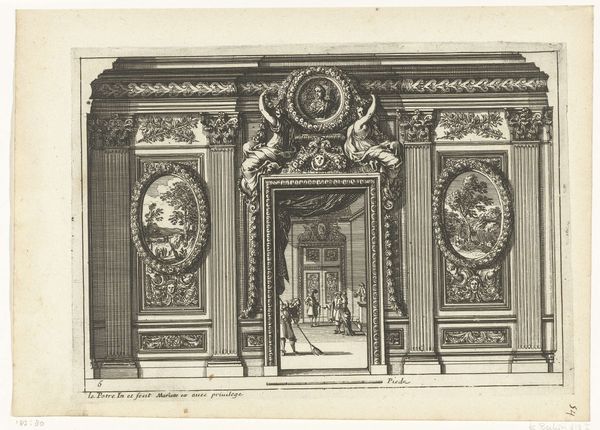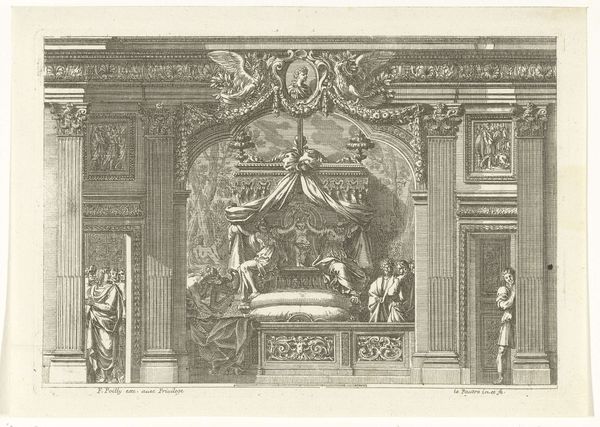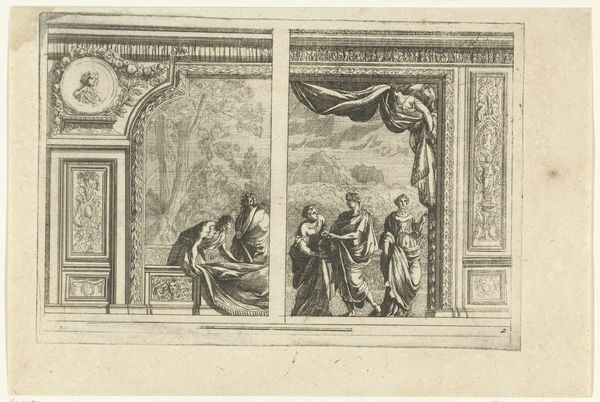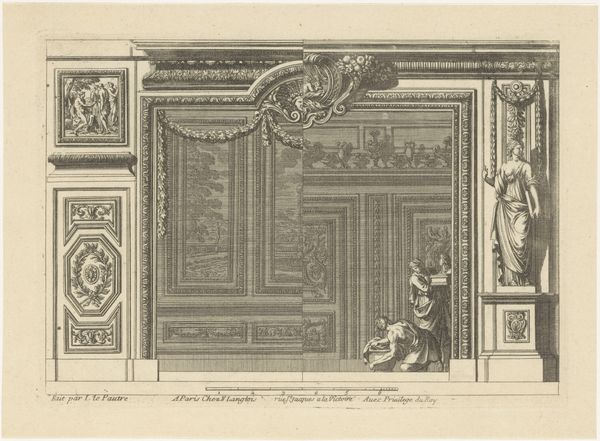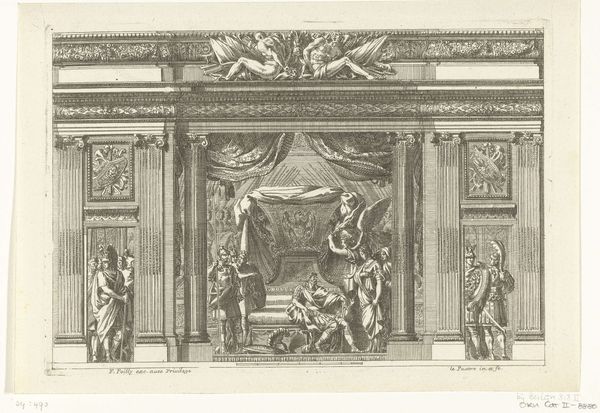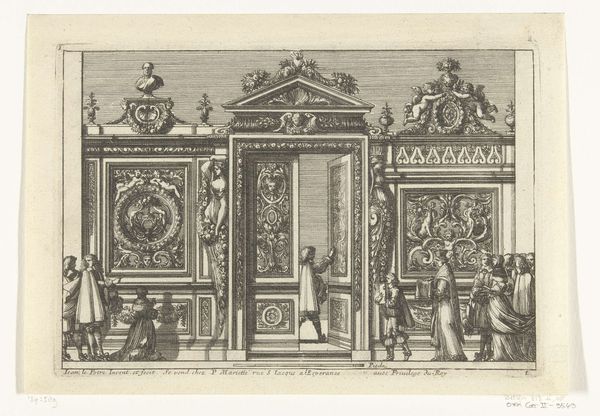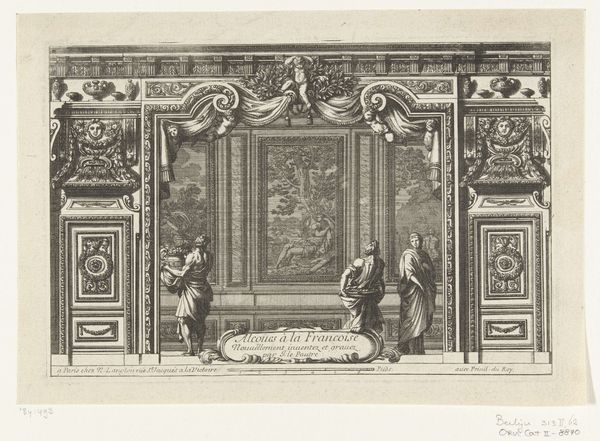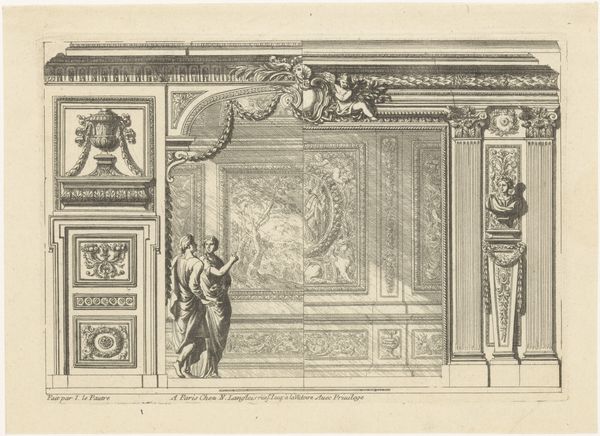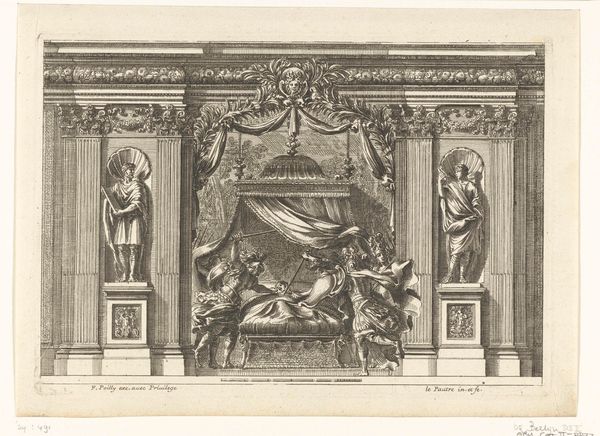
print, engraving, architecture
#
baroque
# print
#
figuration
#
line
#
history-painting
#
engraving
#
architecture
Dimensions: height 141 mm, width 209 mm
Copyright: Rijks Museum: Open Domain
Editor: Here we have Jean Le Pautre's "Alkoof met variant voor rechterhelft", a Baroque engraving dating back to before 1690, currently held in the Rijksmuseum. It's like peering into an ornate dollhouse, a stage set for some grand, perhaps tragic, scene. What jumps out at you? Curator: The whole scene feels, for lack of a better word, performative, doesn't it? It's baroque excess rendered in crisp lines, and this combination sparks a peculiar energy. I sense the artist playing with ideas of private and public space. Do you feel the gaze being both invited and repelled? Editor: Definitely! There's something almost voyeuristic about it. The curtains being drawn back hint at something intimate about to unfold, yet it's presented so formally. Who do you think the figures are? It feels like a history painting but staged. Curator: Exactly. The figures are small, almost secondary, in relation to the architectural splendor, a technique often used to convey grandeur, scale, importance... But at the same time, they're enacting some drama, we can almost feel their emotions, which are very intimate. Think about the period... Versailles was the ultimate stage, and the aristocracy often indulged in dramatic presentations. Editor: It's clever how he's layered different spaces within the engraving, from the balcony scene on the left to the implied depth of the alcove. So, Le Pautre’s playing with perspective here in a more philosophical way? Curator: Precisely. It's all about layers, stories within stories. The engraving itself becomes another layer of mediation, between the artist, the viewer, and the imagined reality. Did anything surprise you? Editor: I never would have expected this level of dramatic intensity from an engraving! I mean, I always associated this type of piece more with decoration, less with raw emotional narrative. Curator: See! Sometimes, all it takes is a little digging and a shift in perspective. Art’s always challenging, questioning, creating, right? Editor: Absolutely, and thanks to you, I think I appreciate Baroque artwork a whole lot more today.
Comments
No comments
Be the first to comment and join the conversation on the ultimate creative platform.
